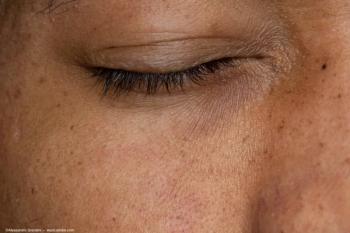
Viscous-dispersive OVD offers best of both worlds
Kingston, PA-FDA study results show the safety and effectiveness of the investigational viscous-dispersive ophthalmic viscosurgical device (OVD) DisCoVisc (Alcon Laboratories) for use during cataract surgery and IOL implantation, said Harvey Reiser, MD.
DisCoVisc Ophthalmic Viscosurgical Device is a sterile solution of highly purified, noninflammatory sodium chondroitin sulfate and sodium hyaluronate. It is formulated to a viscosity of 75,000 ± 35,000 mPa.s (at shear rate of 1 sec-1, 25° C) and has an intermediate cohesive/dispersive index.
Head-to-head comparison There were no significant differences between the two OVDs in any of those outcome variables, and surgeon ratings of product performance showed DisCoVisc offered behavior characteristics that would be considered superior to those of either a pure cohesive or pure dispersive OVD, said Dr. Reiser, clinical trial investigator and a private practitioner in Kingston, PA.
"The results of this study indicate that the DisCoVisc developers have achieved their goal in creating a product that combines the desirable features of both cohesive and dispersive OVDs," he said. "Because of its viscous character, DisCoVisc stays in the eye and maintains the chamber well during phaco, and by virtue of its dispersive nature, it provides excellent protection of the corneal endothelium. It has excellent clarity, allows for easy IOL implantation, and yet is relatively easy to remove at the end of the case. Overall, DisCoVisc appears to be a great product that will give anterior segment surgeons a useful new option in their armamentarium."
Dr. Reiser's own OVD preference has been to use a dispersive agent in virtually all of his cataract surgery cases. However, the group of participating investigators was chosen to represent a mix of surgeons who use cohesive and dispersive OVDs.
Results from the clinical trial showed the two OVDs were associated with nearly identical rates of IOP elevations Ž 30 mm Hg, 13% at 6 hours postoperatively and 6% at day 1. At day 7, IOP was Ž 30 mm Hg in 0.9% of eyes treated with Healon and in none of the eyes operated on with DisCoVisc, and there were no significant differences in rates of IOP elevations between the two groups at any time point.
Mean endothelial cell loss rates at 90 days were also not significantly different between the DisCoVisc and Healon groups, 6.4% vs. 8.8%, respectively. Proportions of eyes with aqueous cells, aqueous flare, and corneal edema were also comparable between the two study groups, and those findings occurred within expected limits of severity and frequency in both groups.
BCVA was 20/25 or better in 51% of eyes treated with DisCoVisc and 44% of eyes treated with Healon on day 1 and reached that level in about two-thirds of eyes in both groups at day 7.
In the Healon group, five eyes operated on by five different surgeons developed cystoid macular edema (CME). While there were no cases of CME in eyes treated with DisCoVisc, the difference in rates between treatments was thought to be an anomaly unrelated to Healon.
Newsletter
Don’t miss out—get Ophthalmology Times updates on the latest clinical advancements and expert interviews, straight to your inbox.


















































.png)


